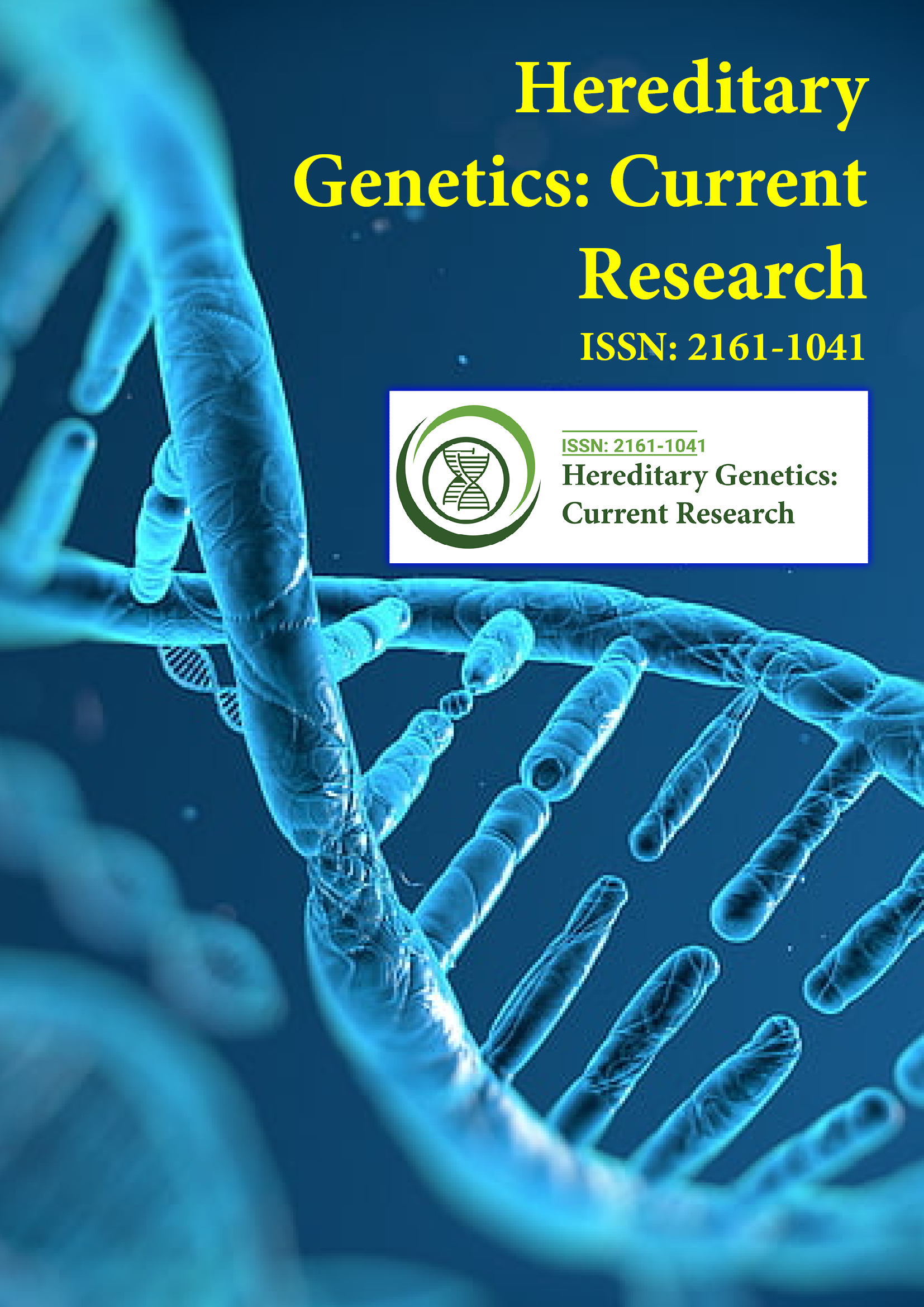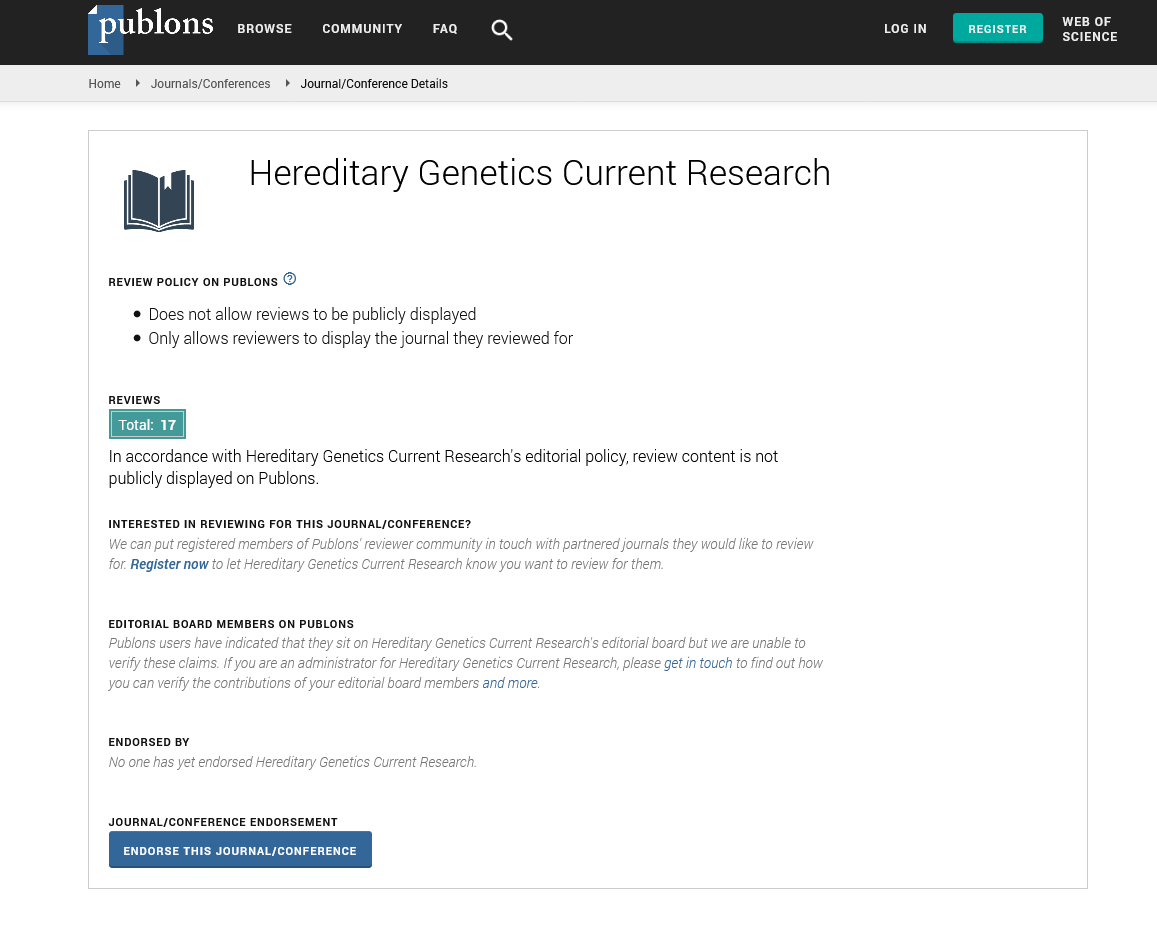PMC/PubMed Indexed Articles
Indexed In
- Open J Gate
- Genamics JournalSeek
- CiteFactor
- RefSeek
- Hamdard University
- EBSCO A-Z
- NSD - Norwegian Centre for Research Data
- OCLC- WorldCat
- Publons
- Geneva Foundation for Medical Education and Research
- Euro Pub
- Google Scholar
Useful Links
Share This Page
Journal Flyer

Open Access Journals
- Agri and Aquaculture
- Biochemistry
- Bioinformatics & Systems Biology
- Business & Management
- Chemistry
- Clinical Sciences
- Engineering
- Food & Nutrition
- General Science
- Genetics & Molecular Biology
- Immunology & Microbiology
- Medical Sciences
- Neuroscience & Psychology
- Nursing & Health Care
- Pharmaceutical Sciences
Perspective - (2024) Volume 13, Issue 1
Role Genetic Diversity and Species Interactions in Invertebrates
Youssef Haddioui*Received: 27-Feb-2024, Manuscript No. HGCR-24-26560; Editor assigned: 01-Mar-2024, Pre QC No. HGCR-24-26560 (PQ); Reviewed: 15-Mar-2024, QC No. HGCR-24-26560; Revised: 22-Mar-2024, Manuscript No. HGCR-24-26560 (R); Published: 29-Mar-2024, DOI: 10.35248/2161-1041.24.13.275
Description
Development positions an increasingly significant serve to biodiversity by causing habitat fragmentation and the formation of isolated habitat patches. In this context, serve as critical refuges for aquatic invertebrates, contributing to the overall biodiversity within urban landscapes. These ponds are not only important for conserving species diversity but also for maintaining genetic diversity within species. The relationship between species diversity (the variety of different species within a community) and genetic diversity (the genetic variation within species) is a key area of ecological research, particularly in metacommunities where multiple interconnected habitats influence ecological and evolutionary processes. A metacommunity comprises interconnected local communities linked through the dispersal of multiple potentially interacting species. In environments, ponds can be seen as local communities within a metacommunity framework.
The metacommunity concept helps in understanding how species and genetic diversity are distributed across landscapes and how these diversities are influenced by environmental factors, spatial structure, and biotic interactions provide a unique opportunity to study Species Genetic Diversity Correlations (SGDC) due to their discrete boundaries, varied environmental conditions, and differing degrees of connectivity. These ponds can vary greatly in size, age, water quality, and surrounding land use, all of which can influence the invertebrate communities they support. Moreover, the degree of connectivity between ponds, through mechanisms like overland dispersal or watercourses, can affect the dispersal of both species and genes. To investigate the species genetic diversity correlation in a metacommunity of invertebrates, a study was conducted in a network.
The following steps outline the methodology
Site selection: A series of varying in size, age, and environmental conditions were selected. These ponds were chosen to represent a gradient of development intensity and connectivity.
Invertebrate sampling: Invertebrate communities were sampled using standardized methods such as sweep nets and sediment cores. Species were identified using morphological characteristics and genetic techniques where necessary.
Genetic analysis: Genetic diversity within species was assessed using molecular markers such as microsatellites or mitochondrial DNA sequences. This analysis provided information on genetic variation and population structure.
Data analysis: Species diversity was quantified using indices such as species richness and Shannon diversity index. Genetic diversity was measured using metrics like allelic richness and expected heterozygosity. The correlation between species diversity and genetic diversity was then analyzed using statistical methods, accounting for environmental variables and spatial factors.
Several key findings about the species-genetic diversity in invertebrates
Positive SGDC: There was a notable positive correlation found between species diversity and genetic diversity among the ponds. Ponds exhibiting greater species richness generally showed higher genetic diversity within species as well.
Influence of environmental factors: Environmental variables such as pond size, water quality, and surrounding land use had significant effects on both species and genetic diversity. Larger ponds and those with better water quality supported more diverse communities.
Role of connectivity: Connectivity between ponds played a critical role in maintaining genetic diversity. Ponds that were more connected had higher genetic diversity, suggesting that dispersal processes are vital for gene flow and genetic variation.
Species-specific patterns: The strength of the SGDC varied among different invertebrate species. Some species showed strong correlations, while others exhibited weaker or non- significant relationships. This variation may stem from differences in life history traits, dispersal capabilities, and ecological needs. The positive SGDC observed in invertebrates aligns with theoretical predictions and findings from other ecosystems.
Several mechanisms could explain this correlation
Dispersal and gene flow: Dispersal between ponds not only facilitates species colonization but also promotes gene flow, leading to higher genetic diversity within species. Ponds that are well-connected by dispersal pathways are likely to support both higher species and genetic diversity.
Habitat heterogeneity: Heterogeneous environments can support a greater variety of niches, leading to higher species diversity. This environmental complexity can also promote genetic diversity by providing diverse selective pressures and reducing the risk of genetic bottlenecks.
Community assembly processes: Processes such as ecological filtering, competition, and mutualistic interactions can influence both species and genetic diversity. For instance, diverse communities might stabilize populations and reduce the probability of genetic drift.
The research on correlations between species and genetic diversity in invertebrates underscores the significance of integrating ecological and genetic factors in biodiversity conservation efforts. Despite their fragmented nature, can serve as vital refuges for aquatic biodiversity by understanding the factors that influence both species and genetic diversity, we can develop more effective conservation strategies to maintain and enhance biodiversity in the aspect of ongoing development and environmental change.
Citation: Haddioui Y (2024) Role Genetic Diversity and Species Interactions in Invertebrates. Hereditary Genet. 13:275.
Copyright: © 2024 Haddioui Y. This is an open access article distributed under the terms of the Creative Commons Attribution License, which permits unrestricted use, distribution, and reproduction in any medium, provided the original author and source are credited.

